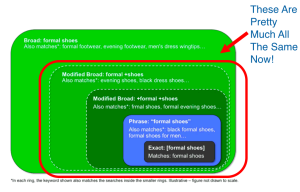I still remember mulling over my first business idea – the odd stares I would get in shops, only to realize I have been standing in front of the same shelf for half an hour; the long debates with myself in the shower; and waking up in the middle of the night, covered in sweat, having just dreamt the business went bust within a year.
On one of these late-night occasions, it dawned on me that putting pen to paper might help ease my mind. I started jotting down as many ideas to validate my master idea as I could, just so my brain would once and for all accept that there’s no reason to keep screening the same nightmare over and over again.
Here are some of the methods I came up with on that night, and some that I have employed since.
1. See what’s out there

Free-Photos / Pixabay
Before you convince yourself you have come up with the next business idea that will change the world, make sure you are quite familiar with what is already out there. You may think you are being incredibly original and creative, but someone halfway across the world may have already beaten you to the punch.
No matter how innovative (or not) your idea is, scour the web for brands selling what you plan to sell, and see how they are doing. Try to answer questions such as:
- How many brands are there in your area? How many worldwide?
- What can you find out about their target market?
- How are they doing financially?
- What are their websites and social media profiles like?
Once you know all of that, you will be much better equipped either to build your own company or to take the idea back to the drawing board and come up with something else.
2. Start asking the right questions

Free-Photos / Pixabay
If you decide there is a market segment out there interested in what you want to offer, and are convinced you can get to them, the time has come to actually ask them about it.
Most of what entrepreneurs think about their target audience is based on assumptions and guesswork – no matter how much research you have done, how much you have looked into their buying habits and online behavior, you are still using your own mind and your own worldview to make decisions about the product or service.
And let’s face it, you are clearly very biased.
Instead of relying on your own ideas alone, test the waters by assembling a pilot test. Find many (and varied) members of your target audience and ask them what they think about your idea. Make sure you formulate your questions without leading them on. Leave them open-ended, and look for honest and raw opinions.
But don’t ask them to judge the product or service you had in mind – talk about the problems they have which you are aiming to solve. The essential questions include:
- What are the pain points?
- How are they solving them now?
- What would they like to have access to they do not at the moment?
- How much would they pay for a solution?
You can assemble as many of these groups as you need or can, but make sure you also take down some basic info about each interviewee. You’ll want some insight into what kind of background they come from, as that will have a significant impact on their answers.
You can also be very bold and ask your non-target market what they think. While this data may not be as essential as the previous set, you can still certainly learn a lot from the experience, refine your target audience, or even further improve on your original idea.
3. Run a mock PPC campaign
When I say mock, I don’t mean “pretend to run it” – run it in real life, but with a much more limited budget.
This will require you to build a website (or at least a couple of landing pages) for the product or service you plan to invest in. You don’t have to go all-in at this stage, but you’ll want to have a couple of pages with a coming soon feel, yet enough details to get people interested and sign up for your email list (or even deposit some money for the future product).
Since you most likely plan to run an actual PPC campaign as soon as you launch, this mock version will help you iron out some keywords, gauge the interest of prospective customers, and see how you compete with the names you know they are turning to for solutions at the moment.
4. Try to make a sale

Shutterbug75 / Pixabay
If you have access to your product in limited quantities, or if you can afford to offer limited access to your services, try to sell them and see what you make of the experience.
Depending on what the product actually is, you can start with a local market, a trade show, an industry conference, or you can run an online social media campaign. If you can, do it in real life, with person-to-person contact, as this will tell you a lot more about the way customers feel about your offer.
Test sales are an excellent way to experience both rejection (which you will need to learn to deal with) and success (the feeling of earning actual cash for your business idea will be the ultimate validation).
Even though you will mostly be focusing on the sale, try to jot down what people are saying – both the yeses and the nos. Then, try to incorporate all that feedback into your product/service and your future marketing efforts.
Final thoughts
Validating a business idea is a prerequisite to investment – or at least it should be. You don’t want to blindly rush into building a company (and trust me, it takes a lot) only to find out three months in that you have no hope in hell to compete with what’s already on the market, or that there is not enough interest to cover your overhead. Play it smart, test the waters properly, and only when you are sure you understand both the risks and the potential gains, reach for your funds and start investing.
Business & Finance Articles on Business 2 Community
(50)








